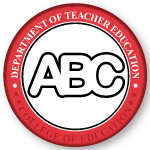Document Type
Article
Publication Date
6-2010
Journal Title
Journal of Chemical Education
Volume
87
Issue
8
First Page
862
Last Page
868
Abstract
The integration of student research into a general chemistry laboratory and an environmental geology course has been evaluated for its effectiveness to improve (i) student attitudes about science and chemistry, (ii) student understanding of the nature of experimental science and the scientific method, and (iii) student perceptions of the application of science and the interdisciplinary nature of science. Students in introductory science courses frequently devote all or most of their time and effort to learning basic laboratory techniques by following predefined procedures that have intentionally predictable outcomes. Though this longstanding model of laboratory structure is an important means of effectively preparing students for future chemical study, it often neglects items i−iii. Students were guided through a research experience by an interdisciplinary team of faculty so that students could begin the research and bring it to an appropriate conclusion, including formal presentations, within a single semester. Evaluation of this instructional strategy indicated that students believed they were doing work similar to a research scientist, that they appreciated this opportunity to do research, that it increased how much they like science in general, and that they were more likely to consider majoring in chemistry. The advanced instrumentation, personal relevance of the research, and collaborations (within and outside the department) contributed significantly to the overall success of the project.
Recommended Citation
Richter-Egger, Dana; Hagan, James P.; Laquer, Fredric C.; Grandgenett, Neal; and Shuster, Robert Duncan, "Improving Student Attitudes about Science by Integrating Research into the Introductory Chemistry Laboratory: Interdisciplinary Drinking Water Analysis" (2010). Teacher Education Faculty Publications. 52.
https://digitalcommons.unomaha.edu/tedfacpub/52


Comments
© 2010 The American Chemical Society and Division of Chemical Education, Inc.